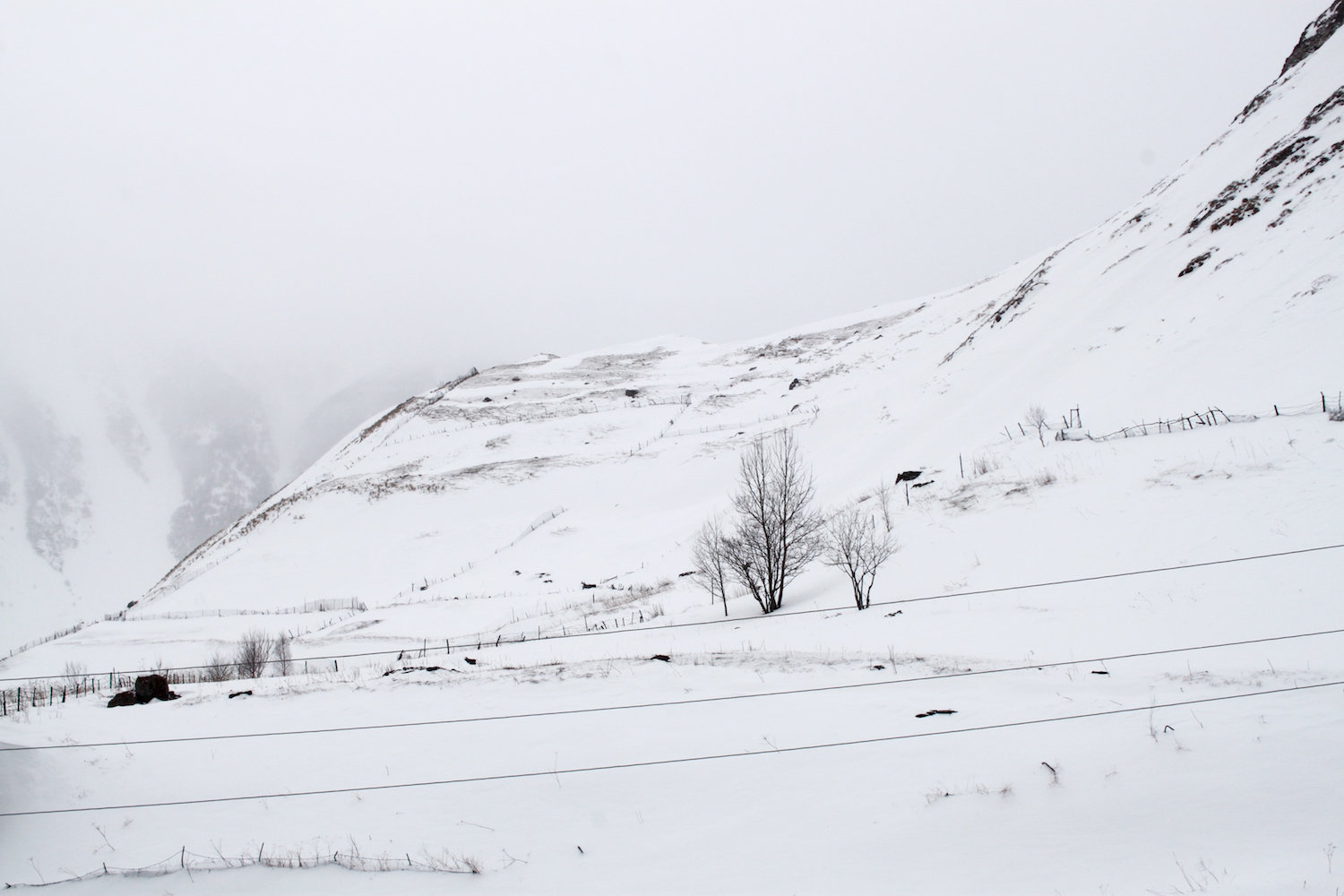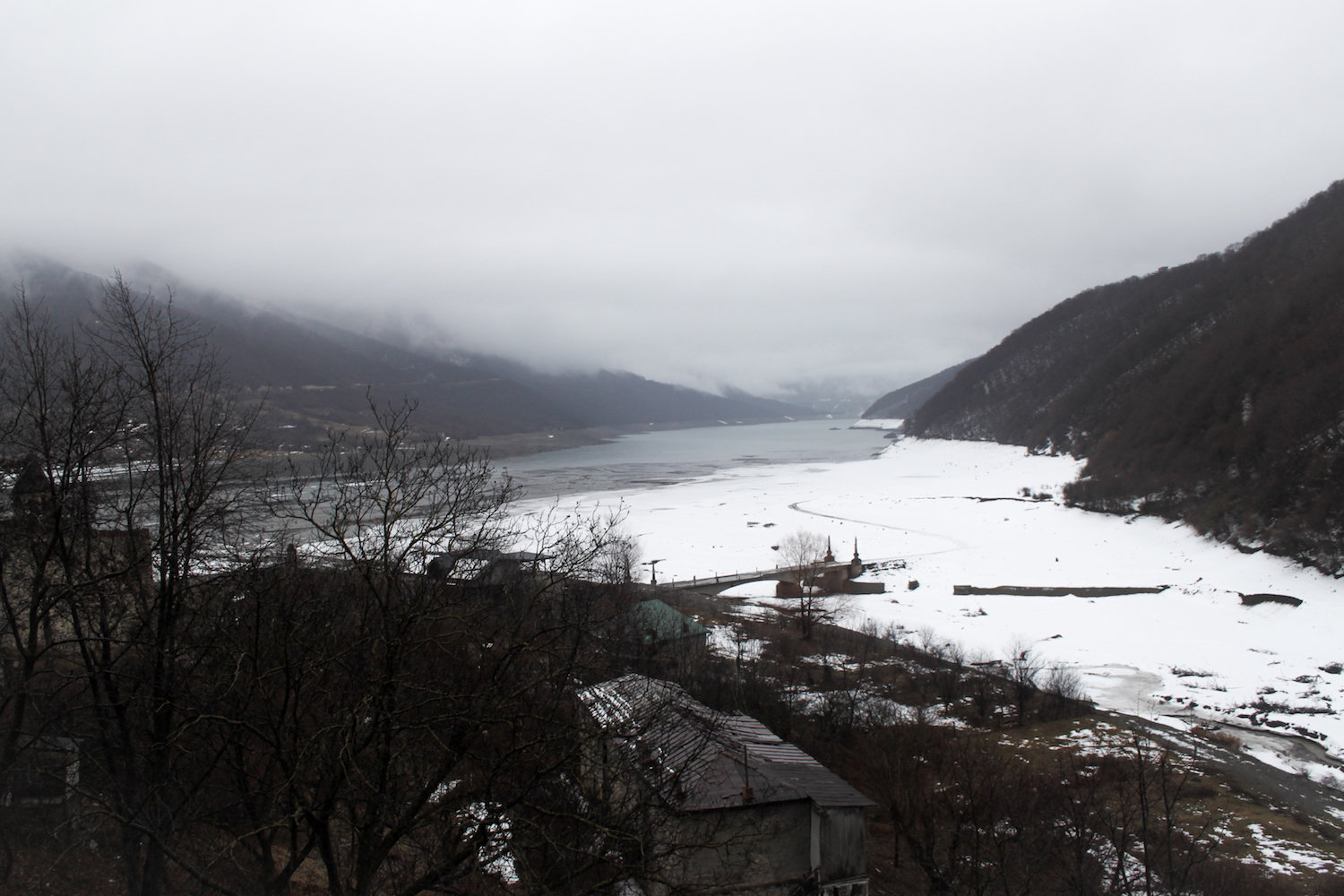
The morning dawned weakly and dull the day we embarked for Stepantsminda – a village lying at the base of Mount Kazbek, the seventh-highest peak in the Caucuses. The riders in the subway were half asleep, and we ourselves only jerked awake outside the Didube station to the shouts of vendors hawking small lemons and nuts, hot khachapuri and coffee. Marshrutka drivers were looking for passengers to fill their vans. They shouted out destinations – Kakheti, Gori, Mtskheta – places we had seen the day before and places we had not.
A driver hustled our direction and asked where we were going. “Stepantsminda,” we replied, and he gestured toward his weathered red van. That was just the route he was taking, he said. “Are the roads safe?” I asked. It had been unseasonably warm in Tbilisi, but this was February after all, and there was no telling what conditions were like at higher altitudes. “I am from there,” he said. And while I couldn’t have known it at the time, I later found out that what he meant by this was, “No, but I’m used to it.”
We bought a quick breakfast from a nearby stand – crescent-shaped khachapuri stuffed with hard-boiled egg – and ate it as the van hobbled along the highway out of Tbilisi. We were tired and fell asleep, but soon woke to the jolt of the road, littered with potholes and dirty slush.


At a monastery, we scrambled out to take pictures. Snow patched the ground, and wet drizzle chilled my bare hands. Below us, the river sluggishly plowed along the banks, freezing in the shallows. The road continued to climb, and the next time we stopped, there were old women wrapped in headscarves and wool selling fruit leather and churchkhela hanging in long, burgundy rows. » Continue reading this post...